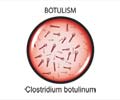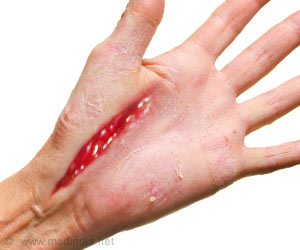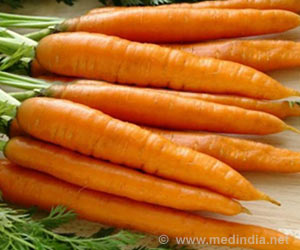Don't let food poisoning ruin your vacation or family gatherings. Here's how to lower your risk this holiday season
- Food poisoning occurs as a result of consuming contaminated food
- Adequate food safety training and employing certified caterers must be done to avoid outbreaks of food poisoning
- Maintaining hygiene while preparing food ensures safety from food poisoning
- Avoiding excess alcohol and ensuring proper food for the pets can keep the spirit of the holidays high
Burden of Foodborne Illness: Findings
Go to source). In New Jersey, the New Jersey Poison Control Center received approximately 230 calls in relation to food poisoning, food preparation, serving, and storage during the holiday season last November and December. “Forgetting about food safety is a recipe for disaster,” said Diane Calello, executive and medical director of the New Jersey Poison Control Center at the Rutgers New Jersey Medical School’s Department of Emergency Medicine. “Don’t prepare food if you have any kind of respiratory illness or infection, as this puts your guests at risk of becoming ill. No matter how busy your kitchen gets during the holidays, always remember the risks of improperly handling food.”
In a study that was conducted earlier this year, a total of 169 cases of food poisoning were identified. The attack rate was 7.2%; a total of 156 (92.3%) cases had symptoms of vomiting, 137 (81.1%) had abdominal pain, and 83 (49.1%) had diarrhea. Consuming at the mass gathering was found to be significantly associated with developing illness (odds ratio: 9.90, 95% confidence interval: 6.46-15.16). Bacillus cereus, Staphylococcus aureus, and coliforms were found in samples of suspected food, food handlers, and the environment (2✔ ✔Trusted Source
Investigation of a foodborne outbreak at a mass gathering in Petaling District, Selangor, Malaysia
Go to source).
To avoid future outbreaks, we recommend that large gatherings use certified caterers with adequate food safety training.
This Holiday Season, Prepare Safe Food
People should remember these four steps:Clean, Separate, Cook, and Chill
- Wash your hands and surfaces often during food preparation using warm water and soap.
- Clean fruits and vegetables by simply rinsing them; do not use soap.
- Be careful of cross-contamination: Keep raw meats, poultry, and seafood separate from other foods that require no further cooking when grocery shopping and in the refrigerator.
- Use separate cutting boards during preparation: one board for fruits, vegetables, and bread, and another board for raw meat, poultry, and seafood.
- Use a food thermometer to make sure foods are cooked to a safe internal temperature. Keep your refrigerator below 40°F and know when you should discard food.
- Refrigerate perishable food within two hours. Thaw frozen food in the refrigerator, in cold water, or in the microwave; never on the counter.
- Food-borne germs—bacteria, parasites, and viruses—can grow very quickly in foods left at room temperature for more than two hours.
- While everyone is at risk for food poisoning, certain groups, such as young children, pregnant women, and those with weakened immune systems from medical conditions, are more likely to get sick and develop a serious illness.
Food Poisoning Symptoms
Food poisoning can happen just a few hours after consuming contaminated food. Symptoms include nausea, vomiting, stomach cramps, diarrhea, and fever.Avoiding Alcohol Poisoning
Intoxication due to excessive alcohol can lead to death or permanent brain damage. People consume alcohol more frequently during the holidays, so it is important to understand how to drink safely and recognize alcohol poisoning.People often consider how many drinks they’ve had, but they don’t consider the volume or alcohol content of those drinks. A standard drink is said to be 12 ounces of beer at 5 percent alcohol by volume, 5 ounces of wine at 12 percent alcohol by volume, or 1.5 ounces of 80-proof liquor at 40 percent alcohol by volume. Most alcoholic drinks are not consistently measured, which makes it difficult to know exactly how much alcohol you are consuming. In addition, drinks today, especially craft beers, often have a much higher alcohol content than they did in the past (3✔ ✔Trusted Source
Moderate Consumption of Beer and Its Effects on Cardiovascular and Metabolic Health: An Updated Review of Recent Scientific Evidence
Go to source).
How to Protect Your Pets from Food Poisoning
- Just like children, pets are quick and can get into dangerous products in no time at all.
- Some holiday foods can be dangerous to pets: chocolate, candy, bread and dough, fatty meat scraps, grapes, raisins, and currants, sugarless products, and cocoa. Artificial sweeteners like xylitol can cause severe illness if pets eat products containing this ingredient.
- To pets, everything looks like food, even products that aren’t edible. Be on the lookout for other common household dangers like button batteries, small magnets, vapes and nicotine products, medicines, and recreational and illegal drugs.
- Keep dangerous products up high and out of sight and reach of pets. If your pet can see it, it can reach it. If any of these items are swallowed, get help fast from a veterinarian or animal hospital.
By following these simple precautionary measures, you and your family can have a safe holiday season.
Reference:
- Burden of Foodborne Illness: Findings - (https://www.cdc.gov/foodborneburden/2011-foodborne-estimates.html)
- Investigation of a foodborne outbreak at a mass gathering in Petaling District, Selangor, Malaysia - (https://pubmed.ncbi.nlm.nih.gov/35402063/)
- Moderate Consumption of Beer and Its Effects on Cardiovascular and Metabolic Health: An Updated Review of Recent Scientific Evidence - (https://pubmed.ncbi.nlm.nih.gov/33803089/)















